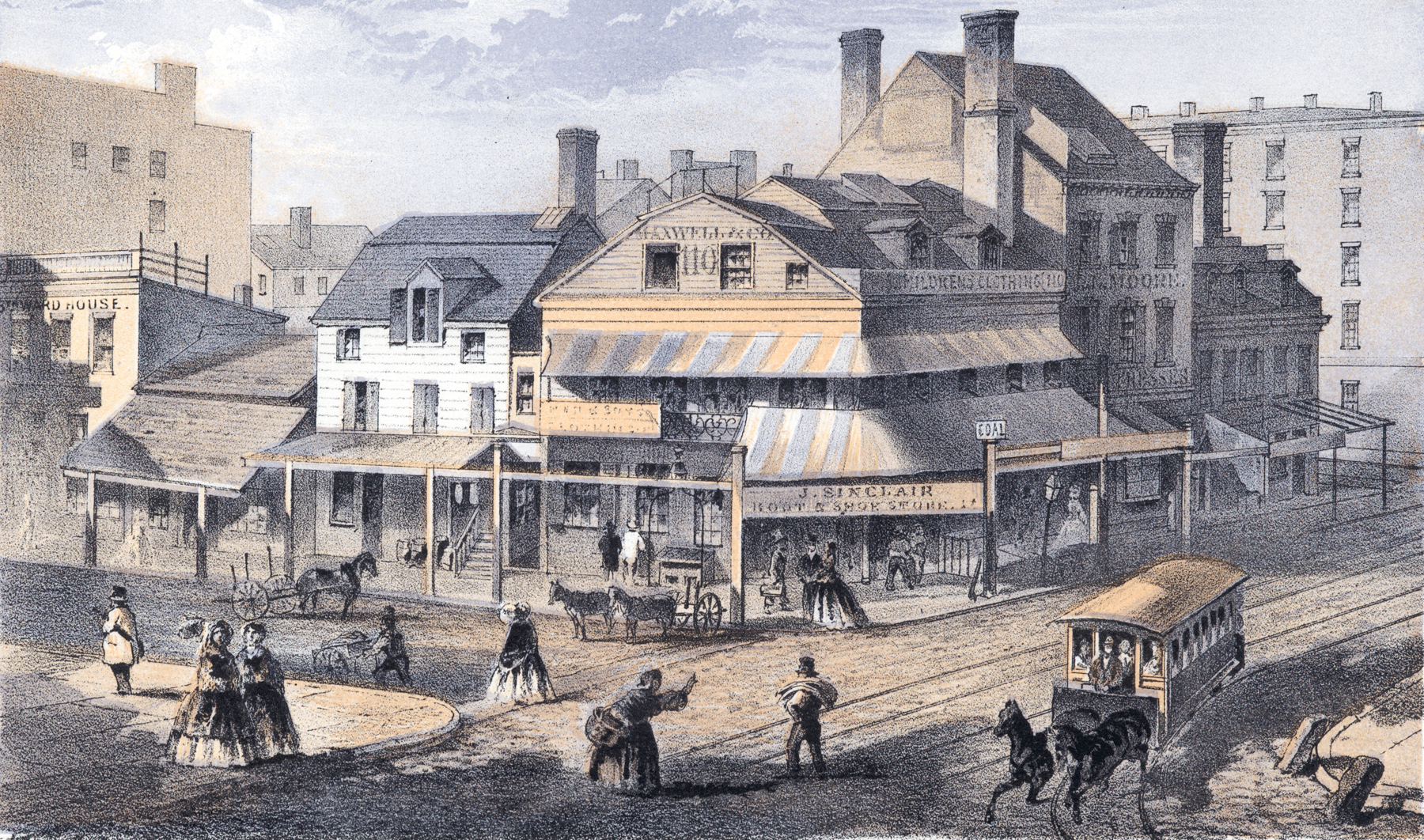
Pearl Street and Chatham Street - 1861
Original title: Old Storehouses Cor. Pearl & Chatham St. 1861. Tinted lithograph of Sarony, Major & Knapp, 449 Broadway, N.Y. for D.T. Valentine's Manual, 1863. Source: Booth's History of New York, NYPL.
Street scene shows stores, pedestrians and street car at the corner of Chatham Street (now Par Row) and Pearl Street in 1861. That was the place where the 27-year-old teacher Elizabeth Jennings Graham boarded a streetcar, in 1854, that did not accept African Americans as passengers. She late for church. She served as organist at the First Colored Congregational Church at Sixth Street and Second Avenue, two miles away. She refused to leave the streetcar and was forcibly removed by the police. She wrote a letter telling her story, which was read at a meeting held in her family’s church. Those present at the meeting voted to form a committee to take her story to legal authorities. In 1855, the court ruled in her favor. In his charge to the jury, Brooklyn Circuit Court Judge William Rockwell declared: "Colored persons if sober, well-behaved and free from disease, had the same rights as others and could neither be excluded by any rules of the company, nor by force or violence". Jennings was represented by a 24-year-old lawyer, Chester A. Arthur. He later became the 21st President of the United States. In 2007, New York City co-named a block of Park Row "Elizabeth Jennings Place", with a sign at the corner of Park Row and Spruce Street.
More: Park Row in 19th Century ►



Elizabeth Jennings Place at the corner of Park Row and Spruce Street. Google Street View, 2022.
Pearl Street and Chatham Street - 1861
|
Copyright © Geographic Guide - Historic Places, 19th Century NYC. |